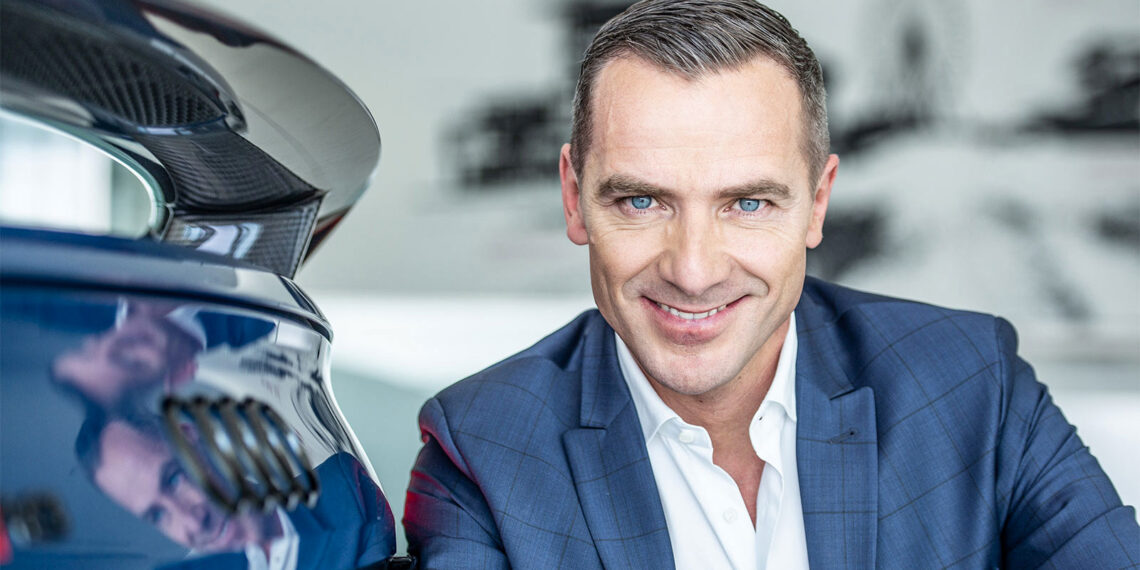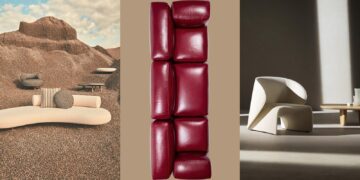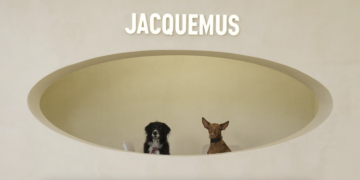Audi presented on 9. February 2023 in Andermatt the new Audi activesphere concept. We grabbed Henrik Wenders, Head of Brand Audi, and asked him the questions that were most on our minds.
Interview: Stefan Berger
FACES: How would you describe the Audi activesphere concept in three words?
Henrik Wenders: Future, freedom, sustainability. Future, because it anticipates a piece of the future. The freedom that I can devote myself to what I want to do regardless of space and time, and sustainably, because I can do so without causing any harm.
F: How does this freedom manifest itself in concrete terms?
HW: I can really follow my heart with this vehicle. I can do the things I want to do, but in the place where my heart leads me and not where my head wants to go. In the past, I might have had to drive to an office to work there. Today I can drive to Andermatt and do the things I want to do during the journey. That’s what I mean by freedom, this independence from space and time that results from networking.
F: What is the purpose of concept cars?
HW: Concept cars have always been the pre-communication of experiences. Over the past 113 years, Audi has always been about form and function, i.e. the visual and haptic experience. Experiences are now being substantially enhanced by 5G, as applications are being added alongside the hardware – services that did not exist before. The automobile is evolving into an experience device. However, the adventure journey does not begin in the car, but at home. This makes our products an integral part of a digital ecosystem. We have created this series to define the overall experience together and make it a coherent whole.
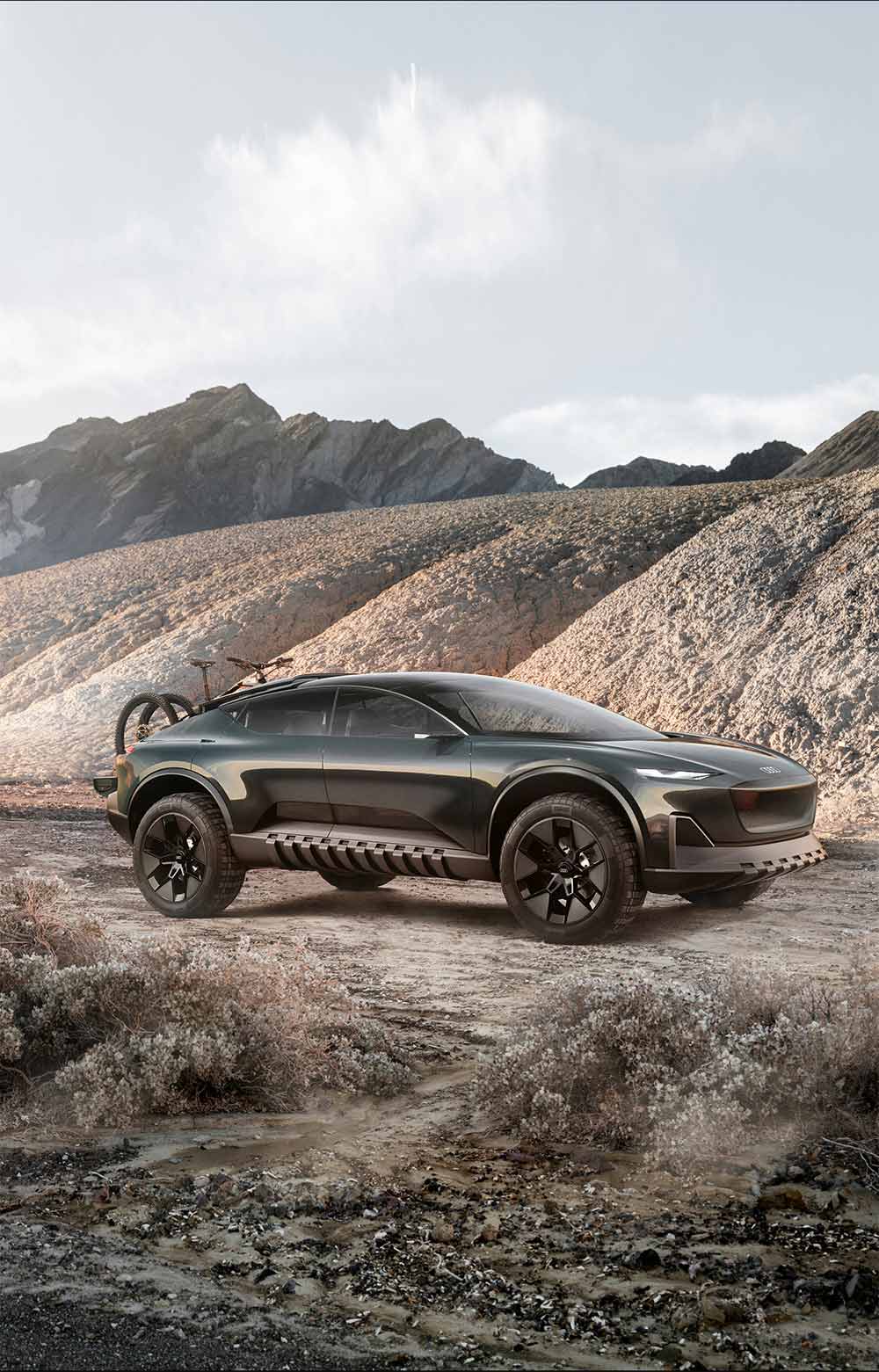
Audi
F: What were your goals in doing this?
HW: On the one hand, we want to say to the world: We control the future. The future is an attitude at Audi. Vorsprung means: you leap forward because you use technology to create added value. That’s how you define the future. On the other hand, we want to explain to the outside world how we envision the connection between the online and offline worlds and also communicate this idea internally.
The car of the future
F: So there has been a rethink in the automotive industry?
HW: Over the past hundred years, the process in the automotive industry has always been the same: first came the engine. This defined the chassis, which in turn defined the outer skin. At the end came the interior, the people. The electric drive has brought about a complete revolution, as the firewall that separated the passenger compartment from the engine compartment no longer exists. Now we suddenly have this gigantic space that allows us to start designing the interior and then create the outer skin around it. It all starts with people and the question of what exactly they should experience in their cars. Of course, this experience depends on the technology. So we need sensors, facial recognition and therefore a completely different infrastructure, indeed a real digital and therefore technological ecosystem, in order to be able to offer these experiences at all. This requires a clear idea internally, which we must communicate to the engineers as early as possible. This is important to prevent the platform from already being defined before you decide what you want to experience on it. That’s why we’re starting with the concept now, before the rest of the vehicle is finalized.
F: The interior thus becomes an experience space. Is this an essential feature of the future of the automobile?
HW: Absolutely. This is also the reason why the vehicles are called “spheres”, because after all, it’s about the privacy that I can retreat to as a passenger. This may well be a private sphere in which I don’t want to be reachable, which is why we have designed a vehicle that works completely without a display. But thanks to an additional window, I can enjoy the beautiful view in every direction, which is something.
Augmented reality and digitalization
F: The Audi activesphere concept relies heavily on augmented reality. Aren’t you extremely dependent on external service providers?
HW: That’s nothing out of the ordinary. You are always dependent on external partners in order to develop something together. For example, we did not develop the transmission ourselves, and yet it is always at the heart of the car. The same applies to the tires. Today, we have around 14,000 suppliers in 60 countries. In this respect, joint development with suppliers in the automotive industry has always been there.
F: How far along is the topic of digitization?
HW: I think it’s fantastic what technology can already do today. I lived in China myself for four years and experienced first-hand how digitalized society there already is. China is the largest Internet market in the world – everything is digital, there is no more cash. This is a fully networked digital ecosystem, so the technology is already there today. We are currently in the process of creating precisely this digital backend with the Car ID so that we can then use it in the front end for specific brands. I am glad that Audi is part of one of the largest automotive groups in the world and therefore has the opportunity to make the investments necessary to develop such a backend. It’s worth it because networking opens up completely different services and service options. You can compare it to the iPhone: Every user uses different apps and has different needs and expectations. We are currently implementing the same thing: We are developing applications that are curated differently for each brand and each individual.
Design and function go hand in hand
F: Back to the design: what role do the colors play in the activesphere concept?
HW: The petrol green of the bodywork is reminiscent of the color of ice on a frozen mountain lake. The vehicle blends almost seamlessly into the natural surroundings. I think it just looks very chic. The warm red of the interior is inspired by open fires. This creates a warm and cozy atmosphere.
F: Audi stands for progressive design. What do you think is progressive about design?
HW: Simply everything. If you asked me what you could compare this design language to, I wouldn’t be able to say it looks like X or Y. That’s what every designer strives for: to create something that no one has ever designed before in this form. Our design team has done a brilliant job here. Here it becomes clear once again that we celebrate this concept of “living ahead” in our brand essence. We leap forward, we use our know-how and the latest technology to create something that has never been seen before, to create experiences that are unique.
F: I find the combination of design and functionality in the Audi activesphere extremely exciting. What is the idea behind it?
HW: The trolley is comparable to a Swiss army knife: beautifully designed on the outside, compact in size, but multifunctional and suitable for any occasion. Keyword pick-up: The fact that I have a pick-up area inside, but can still separate the interior from this area, is fundamental. Because heat is energy, and in an electric vehicle, energy management is the lever for range. Every kilowatt counts, and every optimization counts. Shaping and aerodynamics play a role in perfect airflow, which in turn also has a major influence on the range.
F: What specifications did you have to adhere to in the design?
HW: We decided not to break with viewing habits, although technically we could. The Audi skysphere, for example, has a very long hood. Why? Because a roadster with a long hood is simply breathtakingly beautiful. We just no longer use the space for a six- or eight-cylinder engine, but for golf bags. The larger the hood, the more prestigious the vehicle. This has been learned for over 100 years. From the outside, we have not broken with visual habits, but inside we still have the whole world of experience without destroying the aesthetics.
The target group values sustainability
F: An incredible amount is possible with this vehicle. Who do you imagine as a typical buyer or as a typical buyer?
HW: They are clearly people with an active lifestyle. People who enjoy being outdoors and active in nature. Whether you’re cycling off-road, skiing in the snow, on the water with a foil or on the golf course with a golf bag.
F: This target group is known to attach great importance to sustainability. To what extent has this aspect been taken into account here?
HW: Sustainability is a recurring theme at Audi. We have a completely holistic sustainability concept, from procurement to the portfolio to reuse.

Audi
F: What does that mean in concrete terms?
HW: In procurement, we holdCO2 workshops with 14,000 suppliers in 60 countries to define their decarbonization plan. In production, we are committed to the “Zero” (CO2-neutral) mission. We have already met the targets at three locations. This means that every Audi e-tron driving around out there was built in a plant that operates on acarbon-neutral balance sheet, and by 2025, all Audi plant locations will be completelycarbon-neutral. The largest rooftop photovoltaic systems in the world are on our roofs; that’s over 160,000 square meters of roof area. To this end, every new Audi launched from 2026 will be electric. This means that in less than ten years, we will completely convert our vehicle fleet to electric mobility.
F: What can you tell us about the circular economy?
HW: An Audi contains around 600 to 800 kilos of aluminum. It already makes a difference if I give the rest of the offcuts back to the supplier, who then melts them down again – that alone saves us hundreds of thousands of tons ofCO2 per year. We have also installed water circuits at all Audi plant locations, saving 0.7 billion liters of water last year alone. There are numerous other examples that prove this: Ecological sustainability is already a reality at Audi.
F: What is Audi doing on a social level?
HW: On a social level, we are very much dedicated to inclusion and diversity. Hildegard Wortmann, one of the few women on the board of an automotive company, is consistently driving these issues forward. I believe that the next generation has the right to assume that both ecological and social sustainability are already included.
A look into the future
F: How long will it take before a vehicle like the Audi activesphere concept can actually be realized in series production?
HW: Five years is the thumb size for a completely new approach, because we are talking about a completely new electronic platform here. A platform that may then also enable automated driving and ensure the disappearance of the dashboard and steering wheel. We are currently working with Porsche, Bentley and Lamborghini to define the platforms of the next generation – an activesphere could possibly be added to this.
F: How do you see the future of Audi and its cars in general? What’s next?
HW: This is the fourth chapter of the C4 quadrology and therefore also the final one. We have now defined four fantastic individual interpretations of the future and shown the world that Audi understands the future and what our interpretation of the future looks like. The next electric vehicle will then arrive from the fourth quarter of 2023. After that, we will also launch the other models that we have already announced as concept cars: the A6 e-tron and the A6 avant e-tron.
F: The automotive industry has changed enormously over the past ten years. In your opinion, what qualities does a manufacturer need to have in order to survive in this environment?
HW: When I joined Audi in 2020, the first thing I did in my role as Head of the Audi brand was to review the brand strategy again and revise it together with the Board of Management. The brand essence that I proposed to the Management Board was “Living the Vorsprung”. I don’t mean the lead as a relative position in the sense that you are behind me and I am in front of you, but that I am jumping forward. I think the technological possibilities mean that it has never been so exciting and at the same time so important to have the courage and the mindset to leap forward. In truth, that’s what the company has always done, otherwise there would never have been an aluminum space frame, a five-cylinder, an Audi TT or an Audi 8. The intention was to fully rekindle this mindset. Because we really have to get every single Audi employee on board, as we like to say.
F: Switching to electricity instead of gasoline is one such step.
HW: We have now jumped into the desert together and electrified the first Dakar Rally vehicle. We are currently jumping forward together and electrifying Formula 1. These are very bold steps, and it is precisely these that are so vital in this ultimate decade of transformation. If you don’t have this mindset, then you have a big problem in an industry that has such a long lead time.
F: Which gimmick do you personally like best about the Audi activesphere concept?
HW: I think this pick-up surface is brilliant because it’s so beautifully designed. Even when it is extended, it still looks smart.
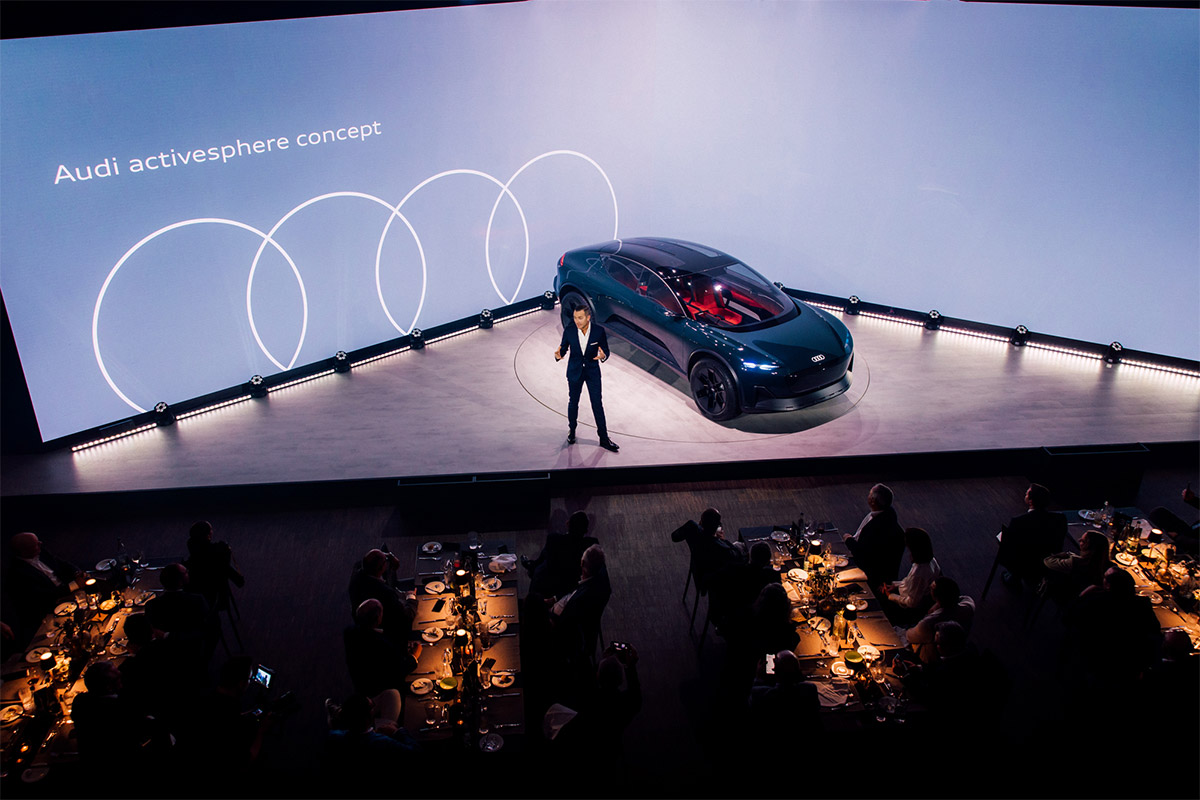
Audi
In Andermatt, we also had the opportunity to speak with Katharina Momani, Head of Marketing at Audi:
FACES: You are using the big stage of the Audi activesphere concept three times today and tomorrow; this afternoon an exclusive press event, in the evening the big gala event, and tomorrow you are organizing the well-known Audi Business Session with the Audi dealers. Can you briefly tell me how it came about and how it went?
Katharina Momani: On 26. The virtual world premiere “the Celebration of progress” of the Audi activesphere concept took place on January 1, 2023. Last week, the vehicle was shown to the public for the first time during the FIS World Cup race in Cortina d’Ampezzo, and today we can celebrate its premiere in Switzerland – in Andermatt. We were able to inspire more than 25 well-known Swiss journalists and influencers as well as more than 70 top-class personalities and, of course, our Audi ambassadors ski legend Didier Cuche and celebrity chef Andreas Caminada with the activesphere.
F: Why is this launch taking place in Andermatt?
KM: We have maintained an intensive and close partnership with The Chedi Andermatt and Andermatt Swiss Alps for many years. Andermatt is known as a visionary and sustainable winter sports destination that invites you to enjoy an active lifestyle; emotional experiences characterized by high quality and pure freedom are guaranteed. These are all attributes that the Audi activesphere concept with quattro drive and the Audi e-tron destination Andermatt have in common.
Both we at Audi and The Chedi offer our discerning customers the highest quality and unique service. We also share common values such as a sense of aesthetics and design, sustainability and environmental awareness as well as tradition paired with innovation.
For these reasons, we have been given the go-ahead to organize this premiere in our market in Andermatt, Switzerland.
F: Which vehicle would you choose from the Sphere concept car quartet and why?
KM: I love nature and freedom! Hence, of course, the Audi activesphere concept. You can go on adventures and have your sports equipment with you wherever you go, without having to compromise on style and elegance. The Level 4 automated driving mode offers a real lounge experience; you can relax or take over the driving. I can decide as a driver, which I particularly like. The large amount of glass also makes it possible to be in close contact with nature. I was fascinated by “Audi dimensions”, the innovative operating concept that combines the physical and virtual worlds (“mixed reality”) by displaying digital information in the field of vision in real time.
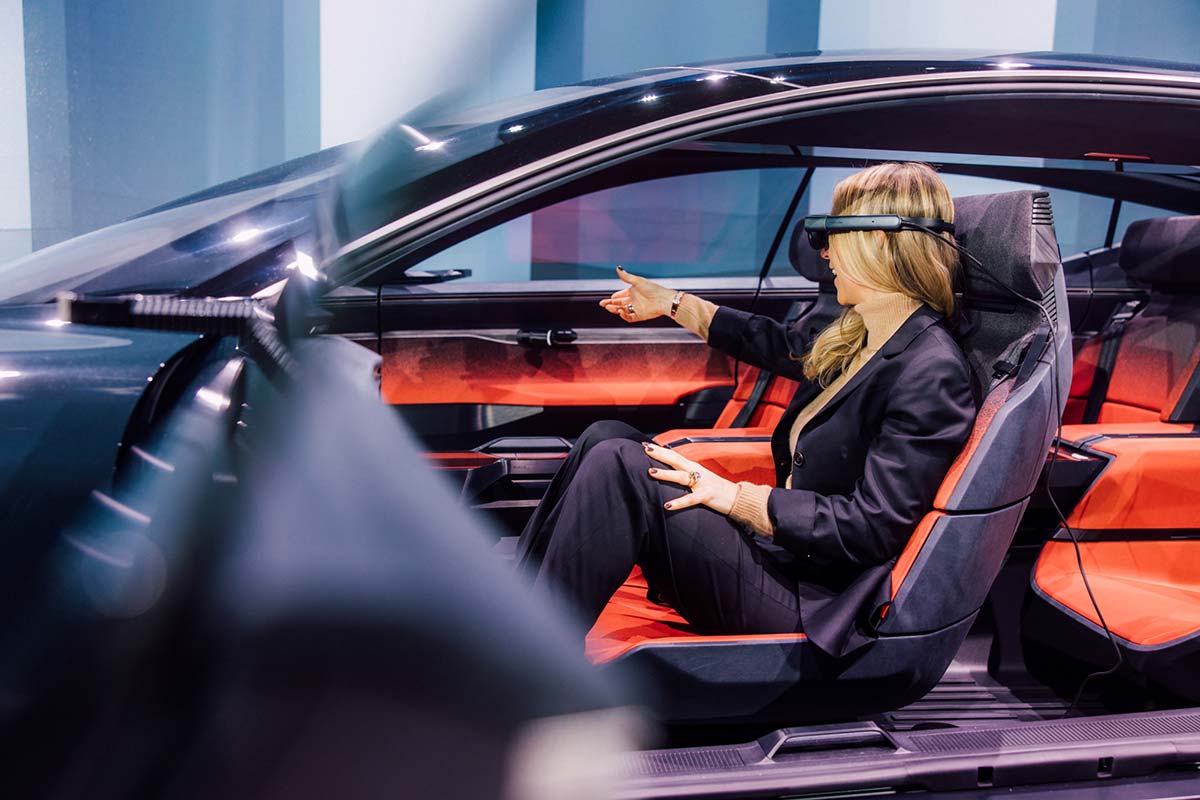
Audi
You can find out more about the world of Audi here, and all the information about the new Audi activesphere concept can be found here.
There’s a lot going on at Audi at the moment. You can read about how the company is shaping the future here.
From future cars to classic cars: the latter prove their charm in our editorial “Off the road again”, which you can find here.


